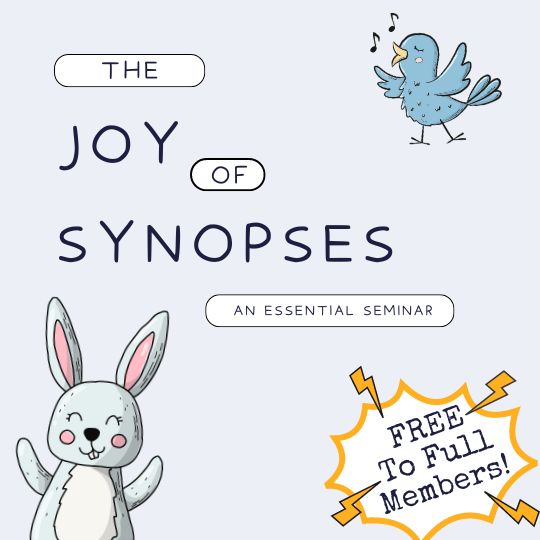Provocative title, eh? But before I attempt to explain it, I'd like to mention a few things. First, a big Thank-you! to @Carol Rose for giving me the opportunity to guest here in the Craft Chat forum. Second, please do familiarize yourselves with Carol's guidelines for engaging with Craft Chat. And third, please be aware that this discussion will be open for five days only (until Friday, April 5) and then locked for posterity. Thank you!
Right, on with the...
--
Show, don’t tell is a load of old tosh.
What? I hear you cry. The writer’s mantra is rubbish? The scribe’s sacred cow is nothing but nonsense? How can that be?
Well, hyperbole aside, Show, don’t tell is useful shorthand for something deep, complex, and less amenable to being summed up in a pithy phrase.
It’s shorthand for the idea that written fiction should seek to dramatize key story events in such a way that readers are forced to ask questions and develop emotional responses while simultaneously maintaining their immersion in the story, and the more engaging the questions and the more visceral the emotions, the better.
So, how do you do that? You show, right? You don’t say:
You say:
That is, you write in a direct way about concrete actions. You show. But what happens if we tweak that paragraph to include a little interior monologue?
Those last two sentences of inner monologue aren’t really showing, are they? For a start I’m writing in third person and have chosen to report the monologue – to tell it – rather than present it directly (it’s still dramatic). But the real issue is: how am I going to show you a thought? Thoughts, as we commonly understand them, are not physical objects. They cannot be described in the same concrete terms as actions. I can’t show you the abstract. I can only tell you about it.
Let’s throw in a simile and a metaphor to drive the point home.
In those last five sentences, I’m not showing you anything, am I? I’m telling you what she’s thinking in the hope that you’ll develop emotions that connect you to her. But I’m still taking care to do it in a way that preserves the vitality of the action, the sense of things playing out in real time, and the drama inherent in the moment. And if you look closely – that sentence about the geisha – I’ve even managed to throw in some backstory, some straight up exposition right there in the middle of the scene.
My point is this: Show, don’t tell is a weak and superficial way of saying that you should dramatize your story’s key moments. It does not mean that telling is bad. It does not mean that you should only show (if you did, you would have a long and boring story with no rhythmic or tonal difference between the vital organs and the connective tissue). But Show, don’t tell – once we dig down to its foundations – does mean that you should strive, at all times, to use the most appropriate range of narrative devices in the most compelling way to engage your readers. But that’s hard, and horribly subjective, isn’t it? Yes, it is.
Beware of pithy rules. Taking them at face value will cripple your writing. Writing is a craft. It’s an art. It’s messy, subjective and contradictory. It cannot be reduced to an algorithm. These rules we throw around are codes for complex ideas. We forget that at our peril.
And now it’s over to you. Does anything I’ve said here resonate with you, excite you, make your spines bristle?
Let the discussion begin!
Right, on with the...
--
Show, don’t tell is a load of old tosh.
What? I hear you cry. The writer’s mantra is rubbish? The scribe’s sacred cow is nothing but nonsense? How can that be?
Well, hyperbole aside, Show, don’t tell is useful shorthand for something deep, complex, and less amenable to being summed up in a pithy phrase.
It’s shorthand for the idea that written fiction should seek to dramatize key story events in such a way that readers are forced to ask questions and develop emotional responses while simultaneously maintaining their immersion in the story, and the more engaging the questions and the more visceral the emotions, the better.
So, how do you do that? You show, right? You don’t say:
The girl held back her tears.
You say:
The girl threw back her head and set her jaw, but the expression lasted no more than a second before her lips pursed and her gaze found the ceiling. She shook her head, inhaled through her nose, and laid her forefingers in the hollows under her eyes.
That is, you write in a direct way about concrete actions. You show. But what happens if we tweak that paragraph to include a little interior monologue?
The girl threw back her head and set her jaw, but the expression lasted no more than a second before her lips pursed and her gaze found the ceiling. She shook her head, inhaled through her nose, and laid her forefingers in the hollows under her eyes. She wouldn’t give him the satisfaction of seeing her break. The bastard could whistle for it.
Those last two sentences of inner monologue aren’t really showing, are they? For a start I’m writing in third person and have chosen to report the monologue – to tell it – rather than present it directly (it’s still dramatic). But the real issue is: how am I going to show you a thought? Thoughts, as we commonly understand them, are not physical objects. They cannot be described in the same concrete terms as actions. I can’t show you the abstract. I can only tell you about it.
Let’s throw in a simile and a metaphor to drive the point home.
The girl threw back her head and set her jaw, but the expression lasted no more than a second before her lips pursed and her gaze found the ceiling. She shook her head, inhaled through her nose, and laid her forefingers in the hollows under her eyes. She wouldn’t give him the satisfaction of seeing her break. The bastard could whistle for it. She’d been running his errands like a hollowed out geisha for years. He was a slug. He was a fat, greasy slug, sliming his way through her life, drowning her in his foul stinking goo.
In those last five sentences, I’m not showing you anything, am I? I’m telling you what she’s thinking in the hope that you’ll develop emotions that connect you to her. But I’m still taking care to do it in a way that preserves the vitality of the action, the sense of things playing out in real time, and the drama inherent in the moment. And if you look closely – that sentence about the geisha – I’ve even managed to throw in some backstory, some straight up exposition right there in the middle of the scene.
My point is this: Show, don’t tell is a weak and superficial way of saying that you should dramatize your story’s key moments. It does not mean that telling is bad. It does not mean that you should only show (if you did, you would have a long and boring story with no rhythmic or tonal difference between the vital organs and the connective tissue). But Show, don’t tell – once we dig down to its foundations – does mean that you should strive, at all times, to use the most appropriate range of narrative devices in the most compelling way to engage your readers. But that’s hard, and horribly subjective, isn’t it? Yes, it is.
Beware of pithy rules. Taking them at face value will cripple your writing. Writing is a craft. It’s an art. It’s messy, subjective and contradictory. It cannot be reduced to an algorithm. These rules we throw around are codes for complex ideas. We forget that at our peril.
And now it’s over to you. Does anything I’ve said here resonate with you, excite you, make your spines bristle?
Let the discussion begin!




